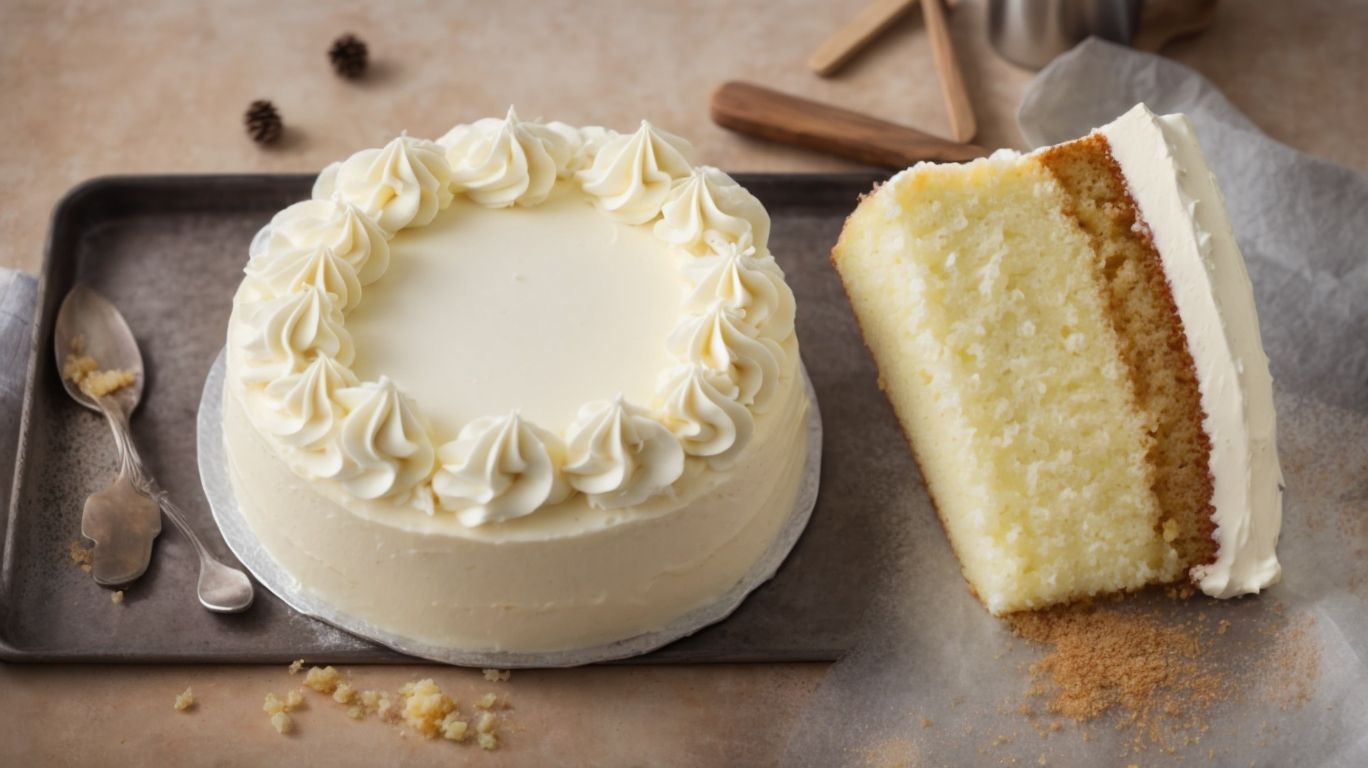How to Bake Vanilla Cake Without Milk?
Are you ready to learn the secrets of baking a delicious vanilla cake without using milk?
We will explore the reasons behind baking a vanilla cake without milk, the benefits of doing so, and the different ingredients you can use as a substitute.
From almond milk to coconut milk, we will discuss how to properly substitute milk in your vanilla cake recipe. Plus, we’ll share some tips for baking a scrumptious vanilla cake without milk and how to beautifully decorate it.
Get ready to impress your taste buds with this dairy-free delight!
Key Takeaways:
The Basics of Baking a Vanilla Cake
Baking a vanilla cake involves a simple yet delightful process that combines essential ingredients to create a moist and fluffy dessert.
Whether one prefers a classic recipe or a gluten-free, dairy-free option, mastering the basics of baking a vanilla cake is a rewarding experience. The use of vanilla extract adds a rich and aromatic flavor to the cake, enhancing its overall appeal. The texture of a vanilla cake can range from light and airy to dense and decadent, catering to various preferences. Vanilla cake variations include layered cakes, sheet cakes, and cupcakes, offering versatility for different occasions.
Why Bake a Vanilla Cake Without Milk?
Understanding why one might choose to bake a vanilla cake without milk opens up possibilities for dairy-free, vegan, or allergy-friendly variations. By exploring milk alternatives and their benefits, you can cater to a wider audience with this classic dessert.
Some common reasons for omitting milk from a vanilla cake recipe include lactose intolerance, dairy allergies, ethical beliefs, or simply exploring new culinary experiences. Coconut milk, almond milk, soy milk, or oat milk are among the popular substitutes for dairy in baking. Each alternative brings its unique flavor profile and texture, which can impart a delightful twist to the traditional cake. By making thoughtful ingredient choices, one can create a delicious vanilla cake that is not only inclusive but also rich in taste and nutrients.
What Are the Benefits of Baking Without Milk?
Baking a vanilla cake without milk offers various benefits, including catering to dietary restrictions such as gluten-free, dairy-free, and vegan preferences. Experimenting with alternative ingredients can enhance the cake’s texture and flavor profile.
For those looking to avoid dairy products, using substitutes like almond milk, soy milk, or coconut milk can create a moist and rich cake. These alternatives not only provide a creamy texture but also add a unique nutty or tropical undertone to the cake, elevating its taste. Replacing milk with applesauce or yogurt can make the cake softer and more flavorful without compromising on the overall structure. By exploring these different options, bakers can tailor the cake to suit specific dietary needs while delivering a delightful culinary experience.
What Ingredients Can Be Used Instead of Milk?
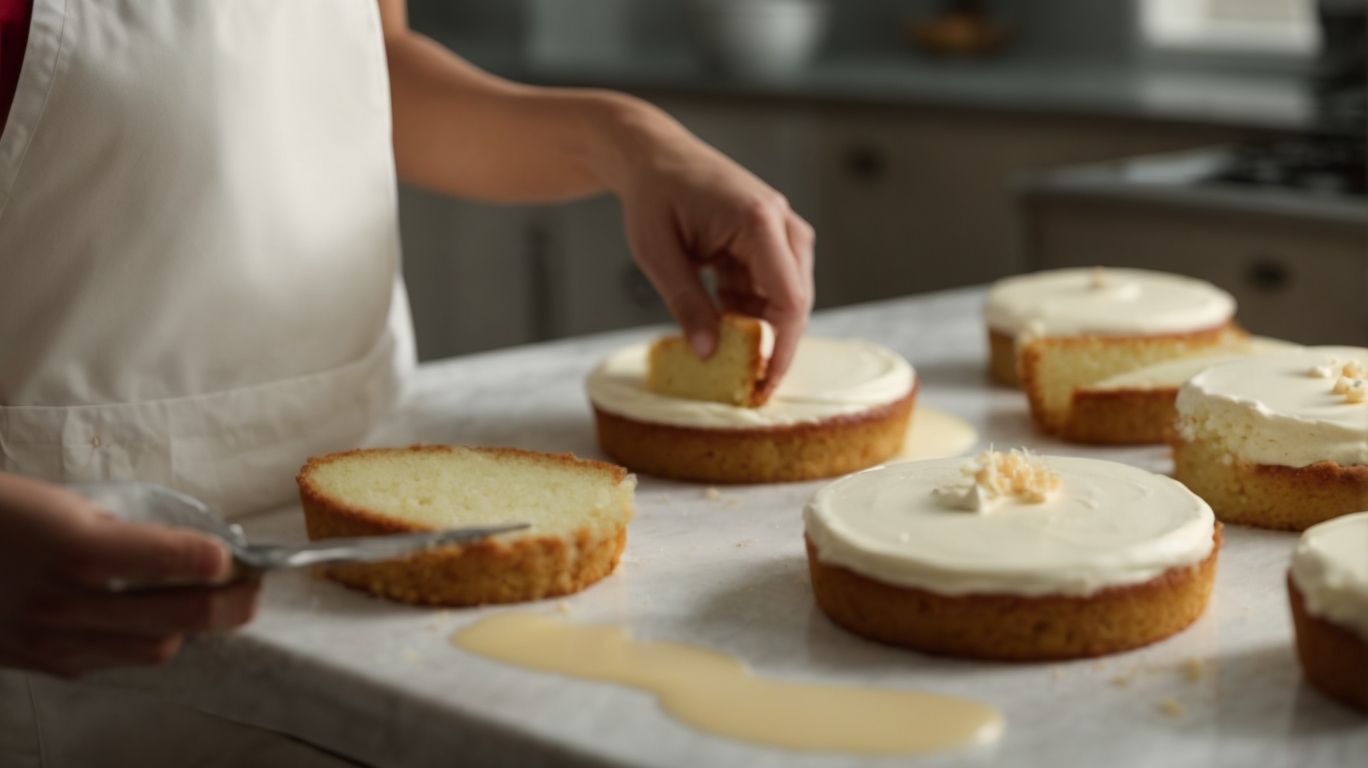
Credits: Poormet.Com – Jason Clark
Substituting milk in a vanilla cake recipe opens the door to a variety of dairy-free options that maintain the cake’s deliciousness and texture. Ingredients like almond milk, coconut milk, and apple cider vinegar can serve as excellent milk alternatives.
Almond milk, known for its creamy texture and subtle nutty flavor, is a popular choice for dairy-free baking.
Coconut milk, with its rich and slightly sweet taste, can add a tropical twist to the traditional vanilla cake.
Apple cider vinegar, when mixed with a non-dairy milk, creates a buttermilk substitute that enhances the cake’s moisture and crumb structure.
Almond Milk
Almond milk is a popular dairy-free substitute in vanilla cake recipes, offering a hint of nuttiness and moisture to the batter.
When mixed into the cake batter, almond milk not only imparts a subtle nutty flavor but also helps in retaining moisture throughout the baking process. Its natural sweetness enhances the overall taste of the cake, making it a favorite choice among those looking for a dairy-free alternative.
In terms of baking considerations, it’s crucial to use unsweetened almond milk to control the sweetness level of the cake. Adjusting the amount of almond milk based on the desired consistency of the batter is essential for achieving the perfect texture in the final product.
Coconut Milk
Coconut milk provides a rich and creamy texture to vanilla cakes without the need for dairy. Its subtle tropical flavor can complement the vanilla and create a moist crumb structure in the cake.
When using coconut milk as a dairy-free alternative, it’s essential to consider its versatility in both enhancing the moisture content and enriching the overall flavor profile of the vanilla cake. The unique properties of coconut milk bring a velvety richness that blends seamlessly with the sweetness of vanilla, elevating each bite to a tropical delight.
The fat content in coconut milk contributes to a tender crumb, ensuring a soft and luscious texture that contrasts beautifully with the lightness of the vanilla essence. To optimize the use of coconut milk in baking, it’s advisable to adjust the other liquid and fat components in the recipe to maintain the desired consistency and mouthfeel.
Soy Milk
Soy milk offers a neutral base for vanilla cake recipes, providing a creamy texture and moisture content similar to dairy milk. Its versatility makes it a suitable option for vegan and dairy-free baking enthusiasts.
One of the advantages of using soy milk in vanilla cakes is that it does not overpower other flavors, allowing the vanilla essence to shine through. Soy milk’s high water content contributes to the cake’s moistness, resulting in a tender crumb texture that is desirable in baked goods. For those with lactose intolerance or dietary preferences, soy milk serves as an excellent alternative to cow’s milk without compromising on taste or texture.
Oat Milk
Oat milk imparts a subtle sweetness and creamy texture to vanilla cakes, making it a popular choice for dairy-free baking. Its light consistency and mild flavor allow the vanilla essence to shine through in the final product.
Oat milk serves as an excellent binding agent in cake batters, ensuring a moist and tender crumb without the need for traditional dairy products. The natural sugars in oat milk caramelize beautifully during baking, adding a delightful golden hue to the cake’s crust. Being a plant-based alternative, oat milk also caters to the growing demand for vegan-friendly treats, offering a guilt-free indulgence for those following a plant-based diet. Its versatility extends beyond cakes, elevating muffins, cupcakes, and other baked goods with its unique characteristics.
Cashew Milk
Cashew milk adds a rich and nutty flavor profile to vanilla cakes while maintaining a moist and fluffy texture. Its creamy consistency and subtle taste make it an excellent alternative for dairy-free and vegan baking.
One of the unique characteristics of cashew milk is its ability to impart a deliciously nutty essence that elevates the overall flavor of the cake. This nuttiness adds depth and complexity, enhancing the vanilla notes and creating a more decadent dessert experience. The texture benefits of cashew milk in baking cannot be overlooked. It helps keep the cake moist and tender, preventing dryness often associated with dairy-free recipes.
How to Substitute Milk in a Vanilla Cake Recipe?
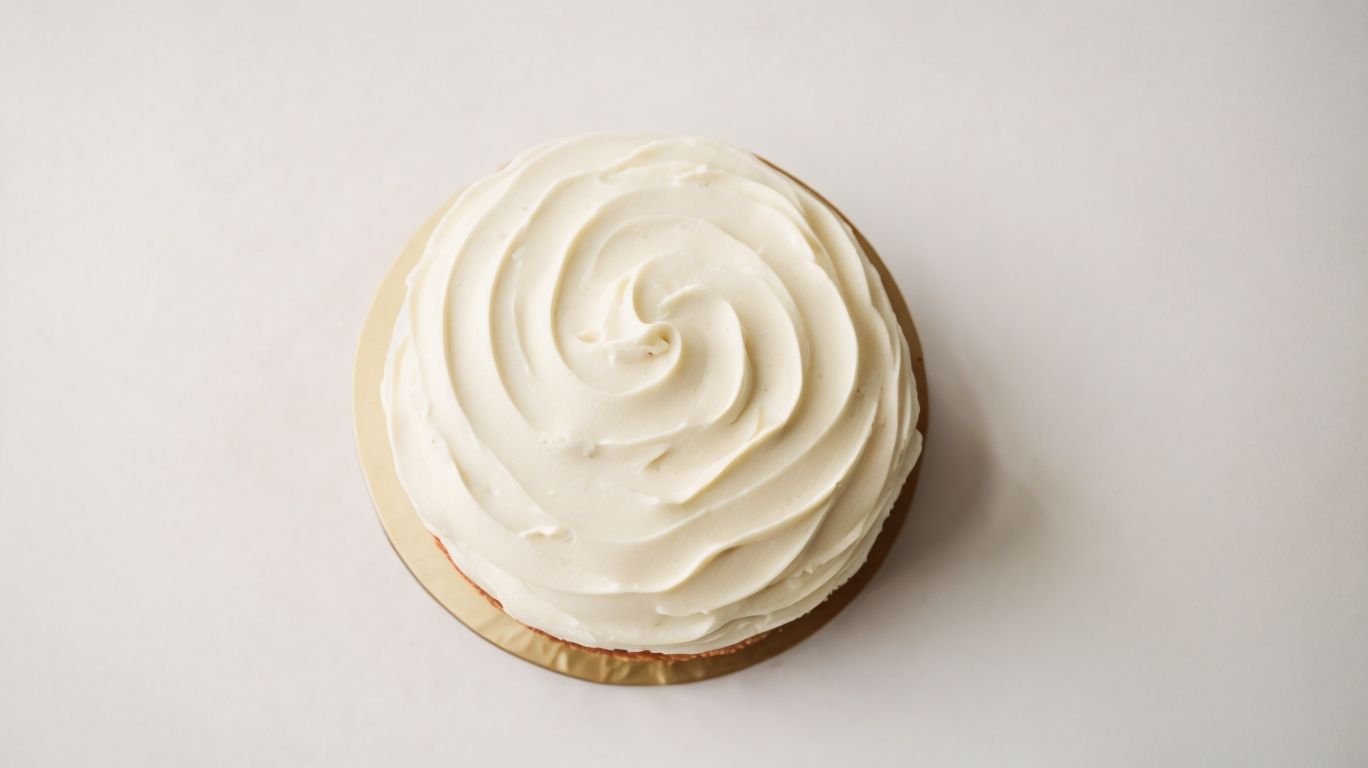
Credits: Poormet.Com – Kevin King
When replacing milk in a vanilla cake recipe, ensuring a seamless transition to dairy-free options is key to maintaining the cake’s moisture and structure. By adjusting ingredient ratios and baking techniques, you can achieve a delicious dairy-free vanilla cake.
One popular substitute for milk in vanilla cake recipes is almond milk, which adds a subtle nutty flavor. To substitute milk with almond milk, use a 1:1 ratio.
For a richer taste, consider using coconut milk instead, but in this case, slightly reduce the quantity due to its thicker consistency.
Applesauce is another excellent replacement for milk, adding moisture and sweetness without compromising the cake’s texture.
Experimenting with buttermilk alternatives like plant-based yogurt or diluted lemon juice can enhance the cake’s tanginess and softness.
Use Equal Amounts of Non-Dairy Milk
Replacing milk with non-dairy alternatives in equal quantities helps maintain the desired consistency and texture in vanilla cakes. Whether using almond, coconut, soy, oat, or cashew milk, measuring accurately is crucial for a successful dairy-free bake.
Accurate measurement is key when substituting non-dairy milk in baking, as each type has unique properties that can affect the final outcome of the cake. Consistency in measurement ensures that the cake maintains the right level of moisture and structure. It is also important to consider the flavor profile of the non-dairy milk chosen, as this can impact the overall taste of the vanilla cake.
Using non-dairy milk in equal proportions helps in maintaining the chemical balance of the recipe, ensuring that the cake rises properly and has the right texture. This is especially important when dealing with delicate recipes like vanilla cakes, where any imbalance in ingredients can lead to a failed result.
Adjust Other Ingredients Accordingly
Adapting the remaining ingredients in a vanilla cake recipe to accommodate milk substitutions is essential for achieving the desired taste and texture. Balancing oil, vinegar, leavening agents, and flour ensures a successful dairy-free cake outcome.
When substituting milk in a vanilla cake recipe, it’s crucial to consider the role each ingredient plays. Oil contributes moisture and tenderness, vinegar aids in leavening and adds tanginess, while leavening agents like baking powder and/or baking soda help the cake rise. It’s also important to choose the right type of flour to maintain the structural integrity of the cake without gluten’s elasticity from milk. These adjustments maintain the delicate balance of flavors and textures in the final product.
Tips for Baking a Delicious Vanilla Cake Without Milk
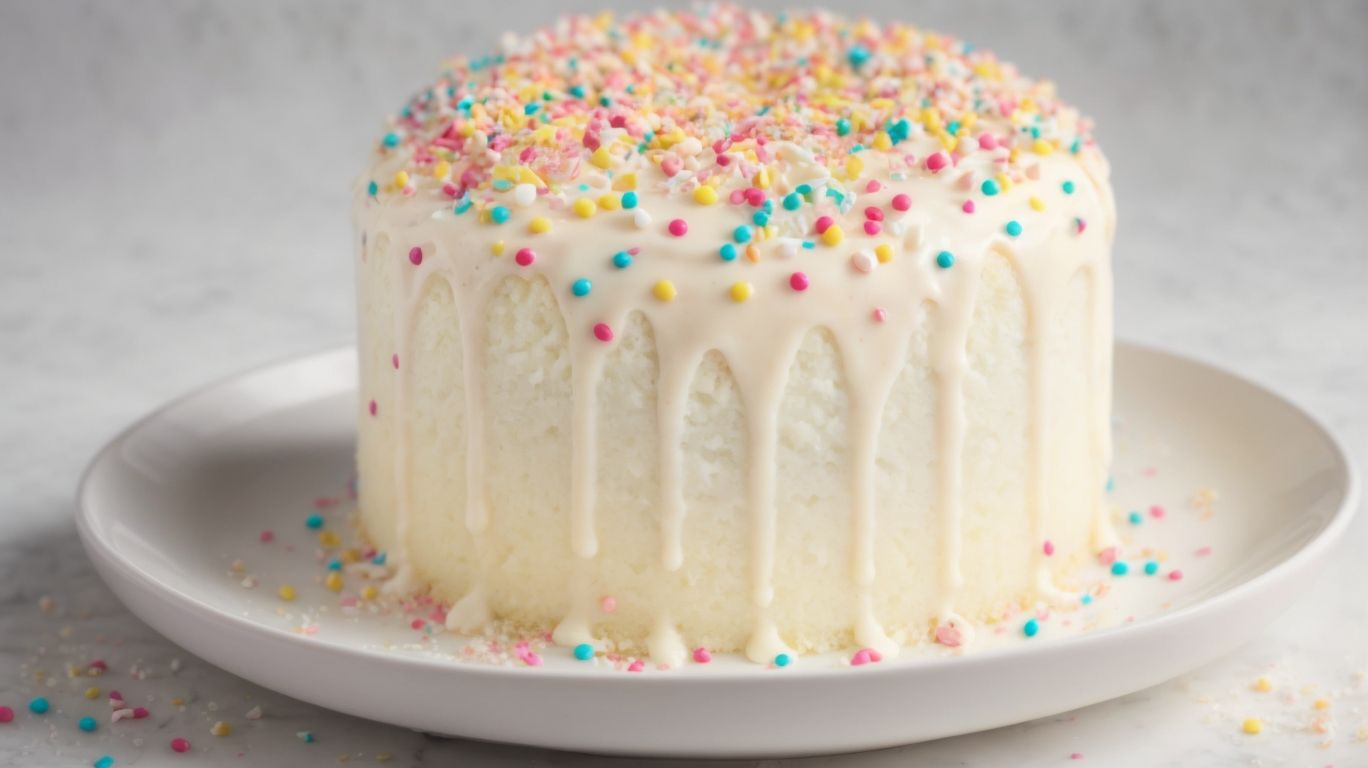
Credits: Poormet.Com – Kenneth Taylor
Baking a delectable vanilla cake without milk involves incorporating key tips and techniques to enhance its flavor and texture. From selecting high-quality extracts to balancing sweetness, these guidelines ensure a delightful dairy-free dessert.
To further elevate the taste of your cake, consider using vanilla bean paste for a richer flavor profile. This ingredient adds depth and complexity that standard vanilla extract may lack.
Experimenting with alternative dairy-free milks like almond, coconut, or soy can introduce unique nuances to your recipe.
Maintaining the right moisture level is essential in achieving a soft and moist cake texture. Incorporating applesauce or dairy-free yogurt can help achieve this while providing structure and tenderness to the crumb.
Use High-Quality Vanilla Extract
Opting for premium-quality vanilla extract elevates the flavor profile of dairy-free vanilla cakes, imparting a rich and authentic taste. The use of high-quality extracts enhances the overall aroma and taste of the cake.
High-quality vanilla extracts, sourced from the finest vanilla beans, bring a depth of flavor that can’t be replicated by artificial substitutes. Their complex flavor profile includes notes of floral sweetness and subtle undertones of caramel and spice, adding layers of complexity to your baking. When combined with other quality ingredients in a dairy-free recipe, these premium extracts create a harmonious blend that delights the taste buds.
Add a Little Extra Sugar
Increasing the sugar content slightly in dairy-free vanilla cakes enhances sweetness and moisture retention, contributing to a moist and tender crumb. Balancing sugar levels ensures a delightful flavor profile in every bite.
By adjusting the sugar levels in your dairy-free vanilla cake recipe, you can customize the taste to suit your preferences. The additional sugar not only adds sweetness but also plays a crucial role in retaining moisture, making the cake soft and delectable.
Finding the right balance of sugar helps in harmonizing the various flavors present, creating a well-rounded and satisfying treat. Experimenting with sugar quantities allows you to tailor the cake to meet your desired level of sweetness and overall flavor profile.
Use a Combination of Non-Dairy Milks for Better Flavor
Blending different non-dairy milks in vanilla cake recipes can enhance the overall flavor complexity and depth of the final dessert. Combining almond, coconut, or soy milk offers a unique taste profile that elevates the cake experience.
Each non-dairy milk brings its distinct characteristics to the table. Almond milk contributes a subtle nuttiness, coconut milk adds a rich creaminess, and soy milk offers a smooth texture. The combination of these flavors creates a symphony of taste sensations that can truly transform a traditional vanilla cake into a culinary masterpiece.
Don’t Overmix the Batter
Avoiding overmixing the batter when preparing dairy-free vanilla cakes preserves the cake’s light and airy texture while preventing toughness. Gently folding the ingredients ensures a tender crumb without compromising on moisture.
Proper batter handling is a crucial step in achieving the perfect dairy-free vanilla cake. Overmixing can lead to gluten development, resulting in a dense and chewy texture. By gently combining the wet and dry ingredients, you allow the batter to maintain its structure while creating a soft and delicate crumb.
Remember that the goal is to evenly distribute the ingredients without overworking them. The right mixing technique contributes to a uniform texture and consistent rise during baking, producing a fluffy and moist cake that delights with every bite.
How to Decorate a Vanilla Cake Without Milk?
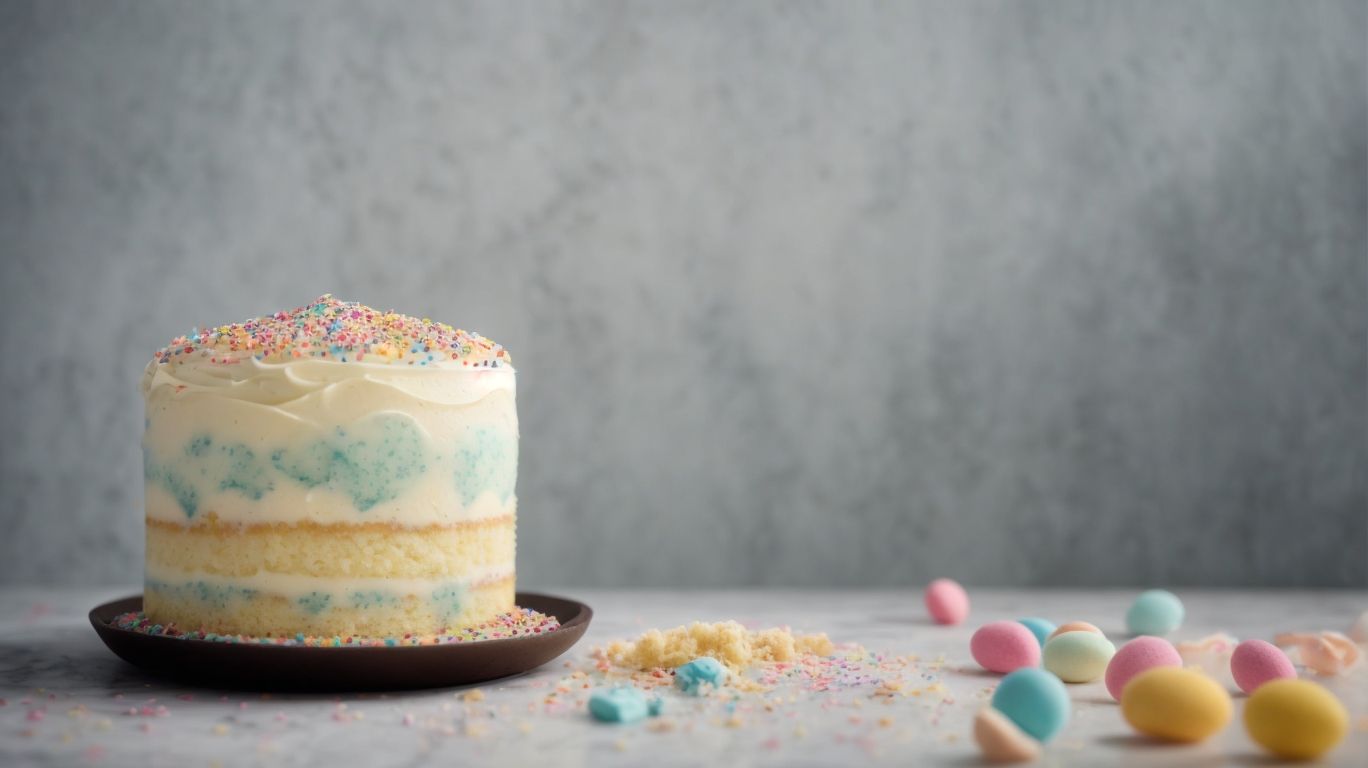
Credits: Poormet.Com – Billy Thomas
Transforming a milk-free vanilla cake into a visually appealing masterpiece involves utilizing dairy-free frosting options and creative decoration techniques. From vibrant fruit fillings to rich cream cheese alternatives, decorating a dairy-free vanilla cake is a delightful culinary adventure.
In terms of selecting the perfect dairy-free frosting for your vanilla cake, options range from silky smooth coconut whipped cream to decadent chocolate ganache made with dairy-free ingredients.
Experimenting with a variety of frostings not only adds depth of flavor but also opens up a world of decorating possibilities.
To infuse a pop of color into your creation, consider using natural food dyes or fresh edible flowers that complement the vanilla base. These colorful elements add an artistic touch and elevate the overall presentation of the cake.
Use Non-Dairy Whipped Cream
Opting for non-dairy whipped cream as a frosting option for dairy-free vanilla cakes adds a light and fluffy texture with a hint of sweetness. This alternative enhances the overall presentation and taste of the cake.
One of the significant advantages of using non-dairy whipped cream is its versatility. It can be easily flavored and colored to suit different themes and occasions, giving you endless creative possibilities. This alternative complements the subtle vanilla flavor of the cake, balancing the sweetness without overpowering it. The smooth consistency of non-dairy whipped cream makes it effortless to spread evenly across the cake’s surface, creating a visually appealing finish that is both elegant and appetizing.
Make a Non-Dairy Buttercream Frosting
Crafting a non-dairy buttercream frosting for dairy-free vanilla cakes allows for a creamy and decadent topping without the use of traditional dairy products. With a variety of flavor options and icing colors, this frosting enhances the visual appeal of the dessert.
One of the key advantages of non-dairy buttercream frostings is their versatility in flavorings, ranging from classic vanilla and chocolate to more exotic additions like fruit purees or coffee extracts. This versatility not only caters to various taste preferences but also allows for creative experimentation in achieving unique taste profiles. The customization of colors using natural food dyes or vibrant ingredients like matcha powder or turmeric provides a visually stunning element to the frosting, making it suitable for a wide array of occasions and themes.
Top with Fresh Fruits and Nuts
Enhancing the aesthetic and flavor profile of dairy-free vanilla cakes can be achieved by topping them with fresh fruits and nuts. From vibrant berries to crunchy nuts, these additions offer a delightful contrast to the cake’s sweetness.
When selecting fruits for garnishing, consider a mix of colors to create an eye-catching presentation. For instance, a combination of bright red strawberries, juicy orange slices, and vibrant blueberries can add a pop of color. Pairing these with sliced almonds or toasted coconut flakes not only introduces a textural element but also balances the sweetness of the cake. Sprinkling pomegranate seeds on top can bring a unique burst of flavor and a touch of elegance to the dessert.
Frequently Asked Questions
Can I bake a vanilla cake without using milk?
Yes, you can bake a delicious vanilla cake without using milk. There are several dairy-free alternatives that you can use in place of milk, such as almond milk, coconut milk, or soy milk.
What is the best substitute for milk in a vanilla cake?
The best substitute for milk in a vanilla cake depends on your personal preference and dietary restrictions. Some popular options include almond milk, coconut milk, and soy milk.
How does using a milk substitute affect the texture of the cake?
Using a milk substitute in a vanilla cake may slightly affect the texture, but it can still result in a moist and fluffy cake. Different alternatives may produce slightly different textures, so it may require some experimentation to find your preferred substitute.
What other ingredients do I need to make a vanilla cake without milk?
Aside from a milk substitute, you will need basic cake ingredients such as flour, sugar, baking powder, eggs, and vanilla extract. You may also choose to add in other flavorings or ingredients, but they are not necessary.
Can I use water instead of milk in a vanilla cake?
Water can be used as a substitute for milk in a vanilla cake, but it may result in a less flavorful and less moist cake. If possible, it is recommended to use a non-dairy milk alternative for better results.
Are there any special techniques or tips for baking a vanilla cake without milk?
One helpful tip for baking a vanilla cake without milk is to use a milk substitute that is similar in consistency to milk, such as almond milk or soy milk. This will help maintain the texture of the cake. Additionally, make sure to follow the recipe closely and adjust the baking time if needed.

